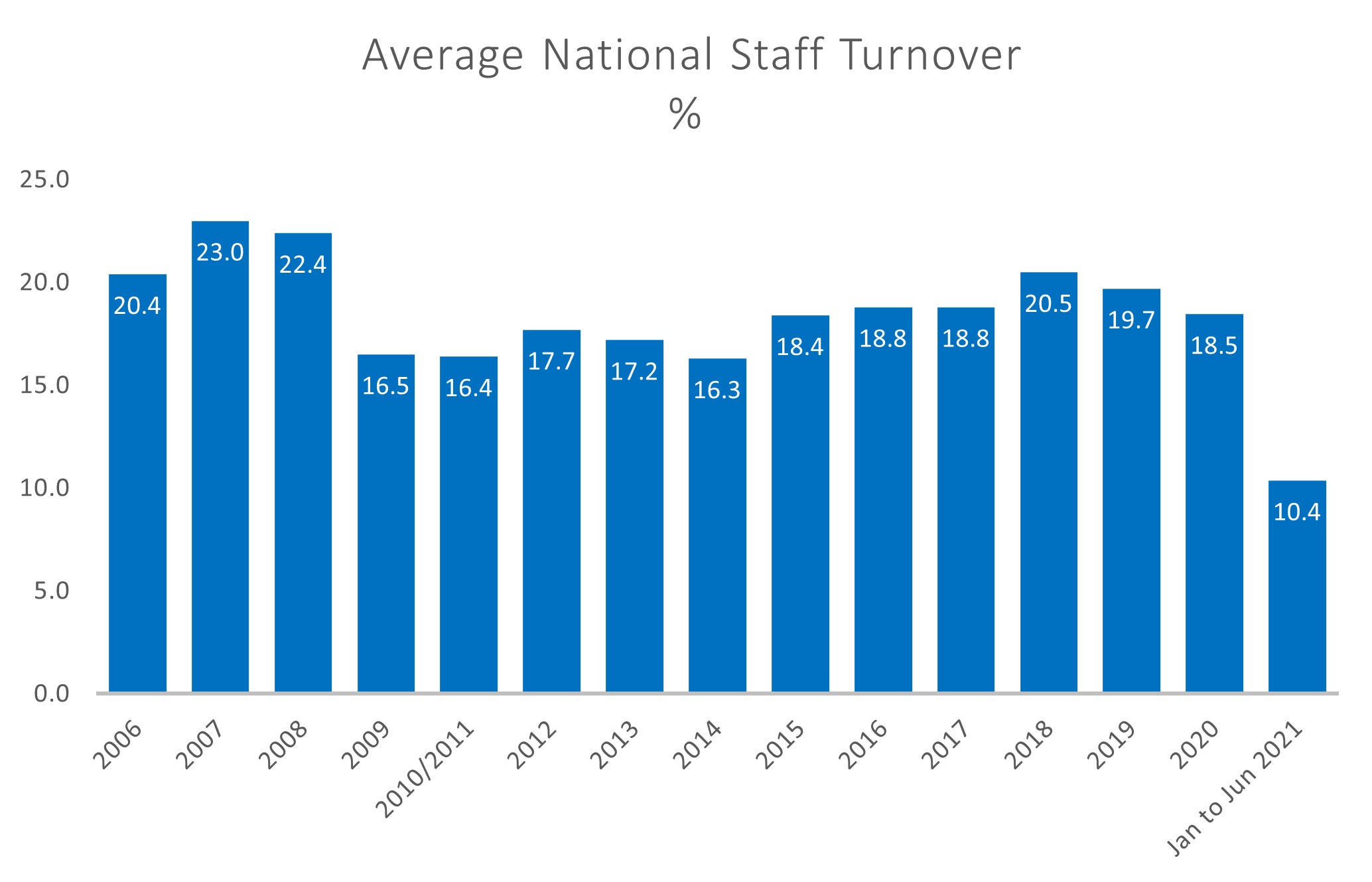Three key factors impacting NZ Staff Turnover
The average National Staff turnover rate for 2020 was 18.5%.
This is a 6.1% decrease from 2019. For the first half of 2021 National Staff Turnover has decreased to 10.4%, a similar level in the first half of 2020.

Staff Turnover in New Zealand plateaued through 2015 to 2017. In 2018 we saw a significant increase to 20.5, the highest rate since before the GFC in 2008.
In 2019 we experienced a reduction in turnover and this trend was expected to continue as the economy was tightening.
Covid -19 rapidly impacted the economy and under such adverse conditions we could expect an increase in National staff turnover, where Involuntary turnover is expected to rise rapidly and dominate the decrease in voluntary turnover. In 2020 however we saw a drop in turnover to 18.0% which is somewhat surprising given the serious nature of the pandemic.
The rate of staff turnover is made up of both voluntary and involuntary turnover.
In a typically strong economy, the level of voluntary turnover will increase as employees feel more comfortable and positive and therefore will seek to improve their employment conditions through new employment opportunities.
At the same time, we expect a decrease in the rate of involuntary turnover as businesses are more typically in a stable or growth mode and are not as often needing to actively reduce staff.
In 2018 we saw some interesting variability in Voluntary vs Involuntary turnover. Involuntary turnover increased significantly by 62% to 4.2%.
Normally we would expect with this rise to see a corresponding decrease in Voluntary turnover however this remained steady at 17.2%.
This same variability was seen in 2014 and 2015 where we saw an increase in both Voluntary and Involuntary turnover.
This trend is attributed to larger variability across sectors of the economy with events such as the Christchurch earthquake and subsequent recovery contributing significantly to variability across sectors and regions.
In 2019, a 4% decrease in National turnover occurred continuing a relatively stable period of turnover from 2015 through to 2019.
In 2020 we saw a further 6.1% decrease in National turnover.
Three key factors.
This decrease in staff turnover may appear surprising when we consider the impact of Covid on our economy, however we believe that 3 key factors have contributed to this decrease in turnover.
Firstly, the provision of financial support by the government throughout 2020 slowed the impact of Covid on businesses enabling them to maintain higher staff numbers than expected. This resulted in a lower increase in Involuntary turnover.
Secondly, the increase in Involuntary turnover was met by a reduction of Voluntary turnover as people chose to remain in their current role.
Thirdly, many businesses and sectors were able to perform well through 2020.
Many “essential” businesses have reported strong financial results which has again reduced the need to reduce staff numbers with some taking on extra staff to respond to demand.
